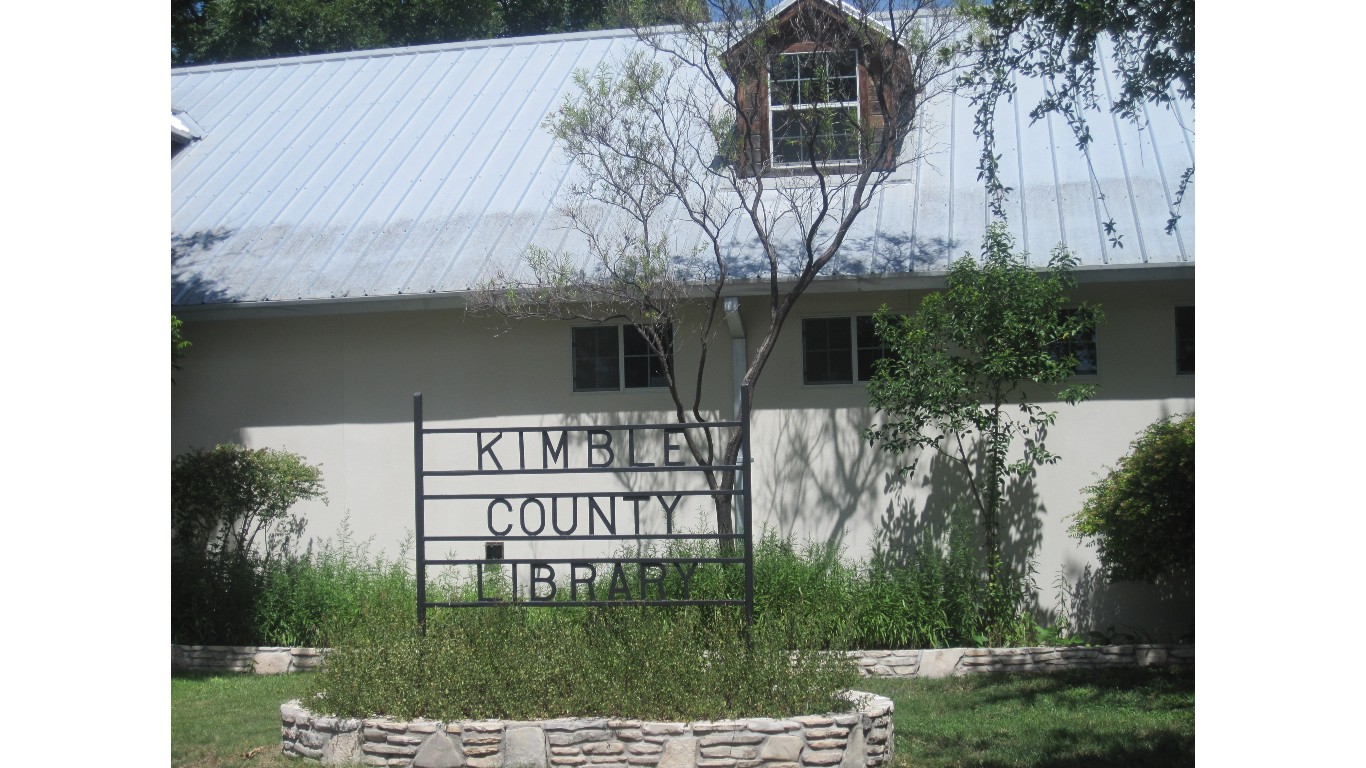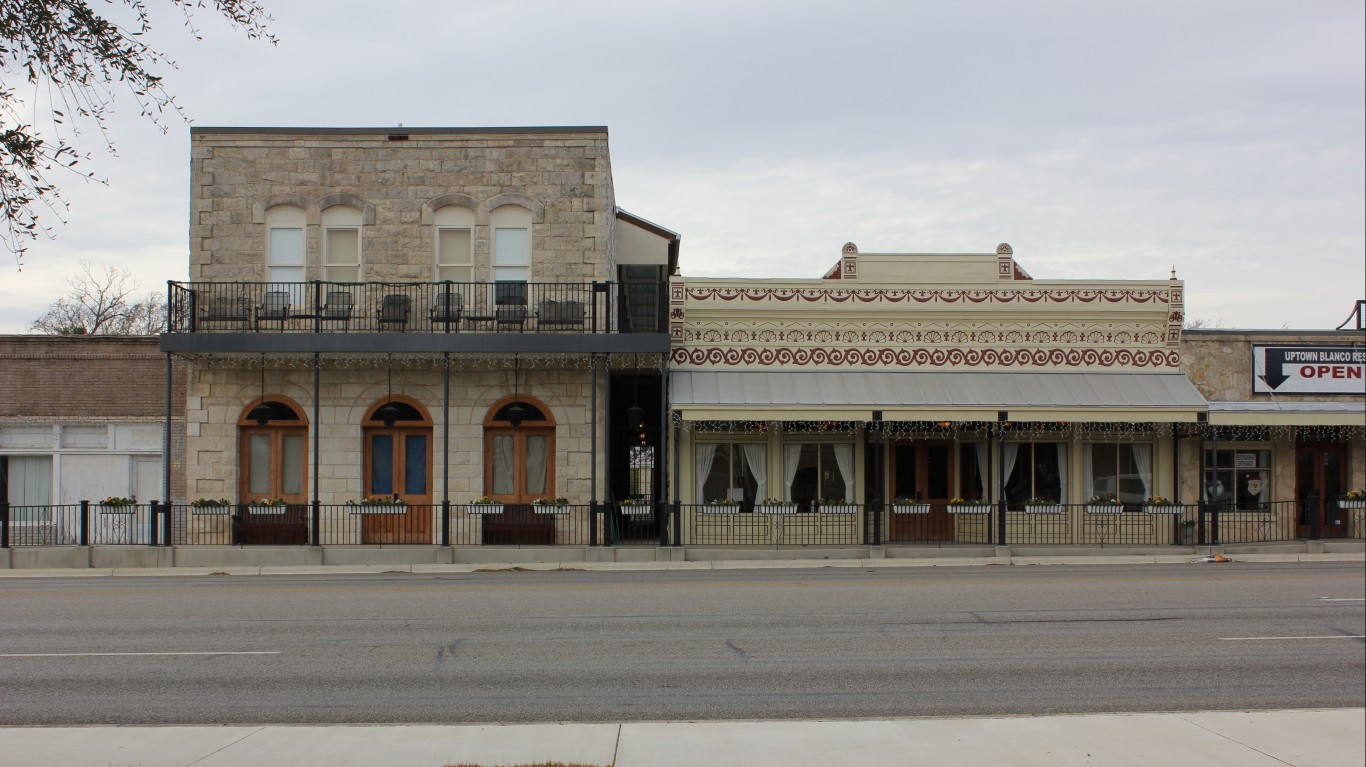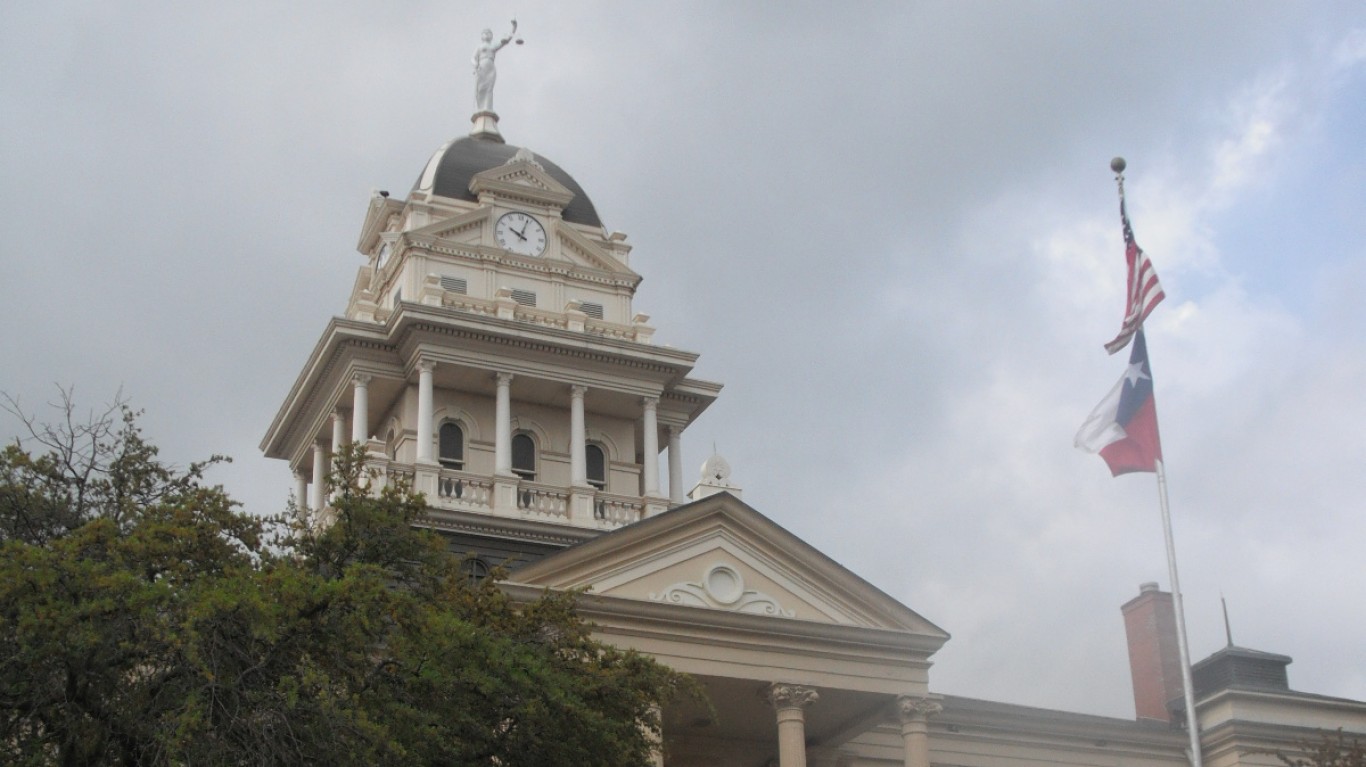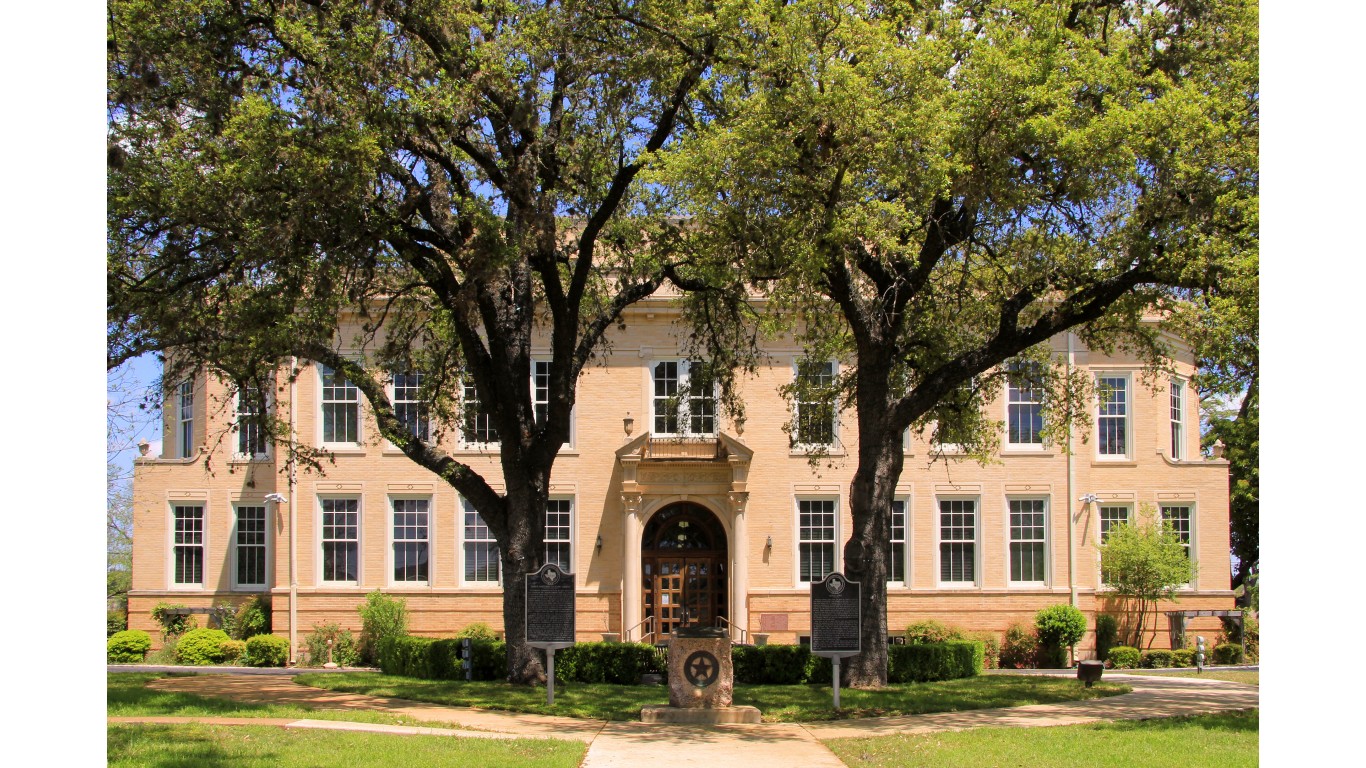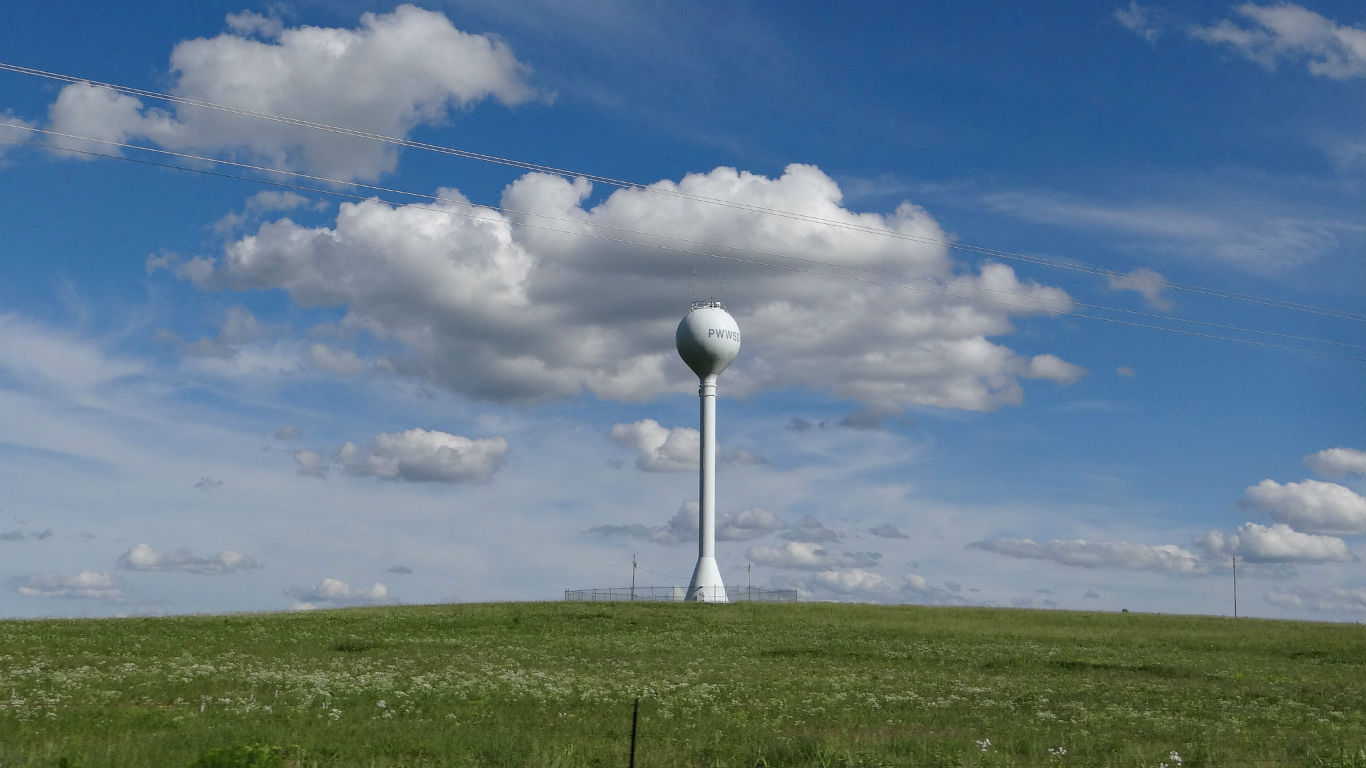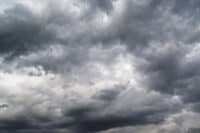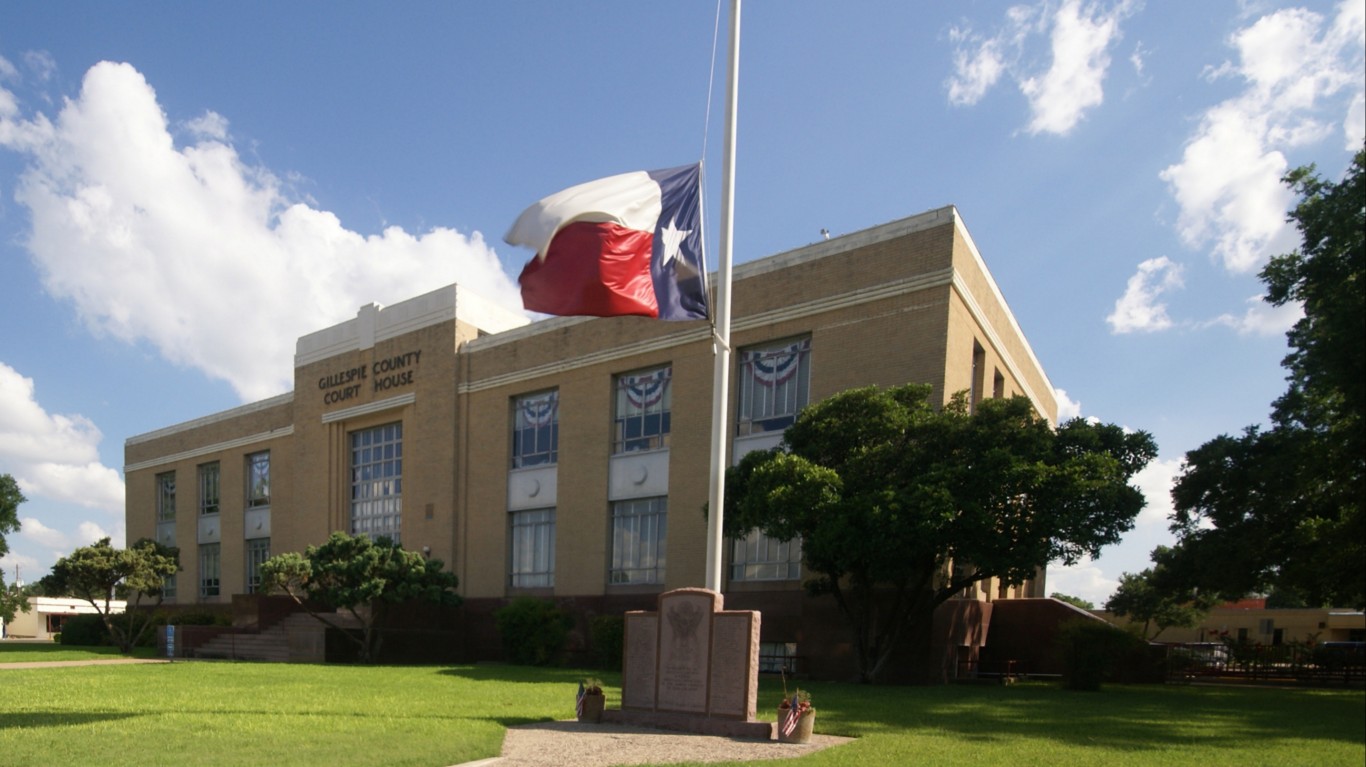
Tropical Storm Hilary recently struck southern California in an extremely rare weather event that dumped a massive amount of rain in a short period of time, causing flash flooding and mudslides but also bringing relief to a part of the country that has been wrung dry by years of epic drought.
Extreme drought conditions in much of America’s most populous state had already ended after high amounts of rain and snow last winter. Still, sporadic heavy bouts of precipitation common in this era of global warming is not ideal. Steady streams of lighter rainfall are more favorable and manageable. For now, at least, California is faring better than other parts of the country when it comes to drought conditions — including parts of the country’s second most populous state.
In August, Texas Gov. Greg Abbot ordered 75% of his state under a wildfire disaster declaration, putting equipment and manpower on standby. Wildfires are not the only concern. Nearly 3.5 million Texans are currently also under extreme drought conditions.
For example, Edwards Aquifer, the main water source for San Antonio, the country’s seventh most populous city, has dropped to its lowest level in more than three decades. (Here are 20 famous lakes that are going dry.)
To find the most intense U.S. drought conditions, 24/7 Wall St reviewed data on drought conditions from Aug. 15 through Aug. 21, 2023 in U.S. counties from the U.S. Drought Monitor, which is produced through a partnership between the National Drought Mitigation Center at the University of Nebraska-Lincoln, the United States Department of Agriculture and the National Oceanic and Atmospheric Administration.
Counties are ranked by the share of area in “exceptional” drought, or D4, the highest level of drought measured. We also included the level of D4 drought in each county during the same week one year ago as well as the current level of “extreme” drought (D3).
Half of the 28 most-parched counties are located in central Texas, while the rest are distributed across eastern Nebraska, southeastern Kansas, and northern Wisconsin. More than 3.7 million people live in these areas, most of them in and near the Texas cities of San Antonio, Georgetown, Belton, and New Braunsfels. (This American city ranks as having the best weather.)
Larger cities suffering from the country’s most intense drought conditions outside of Texas include Independence, Kansas; Grand Island, Nebraska; and Superior, Wisconsin.
Here are the driest places in America right now.
28. Mason County, Texas
> Exceptional drought (D4), 8/15: 0.1% (1.1 square miles)
> Exceptional drought, one year ago: 77.0%
> Extreme drought (D3): 88.01% (825.4 square miles)
[in-text-ad]
27. Medina County, Texas
> Exceptional drought (D4), 8/15: 1.1% (14.7 square miles)
> Exceptional drought, one year ago: 81.0%
> Extreme drought (D3): 73.36% (980.3 square miles)
26. Burnet County, Texas
> Exceptional drought (D4), 8/15: 2.1% (21.8 square miles)
> Exceptional drought, one year ago: 39.3%
> Extreme drought (D3): 100% (1025.6 square miles)
25. York County, Nebraska
> Exceptional drought (D4), 8/15: 2.5% (14.2 square miles)
> Exceptional drought, one year ago: 0.0%
> Extreme drought (D3): 100% (578.0 square miles)
[in-text-ad-2]
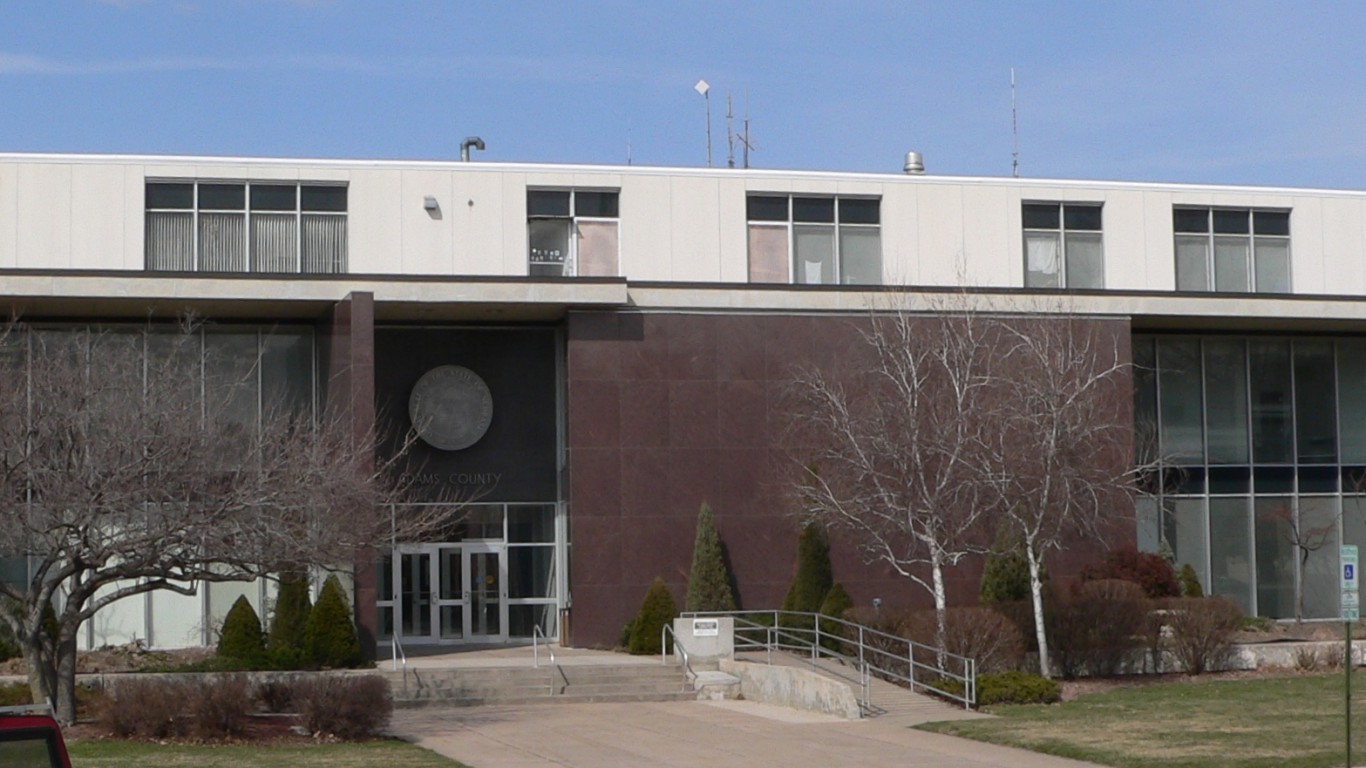
24. Adams County, Nebraska
> Exceptional drought (D4), 8/15: 2.5% (14.1 square miles)
> Exceptional drought, one year ago: 0.0%
> Extreme drought (D3): 85.39% (481.2 square miles)

23. Polk County, Nebraska
> Exceptional drought (D4), 8/15: 3.1% (13.5 square miles)
> Exceptional drought, one year ago: 0.0%
> Extreme drought (D3): 100% (439.5 square miles)
[in-text-ad]
22. Wilson County, Kansas
> Exceptional drought (D4), 8/15: 4.4% (25.2 square miles)
> Exceptional drought, one year ago: 0.0%
> Extreme drought (D3): 26.67% (153.0 square miles)
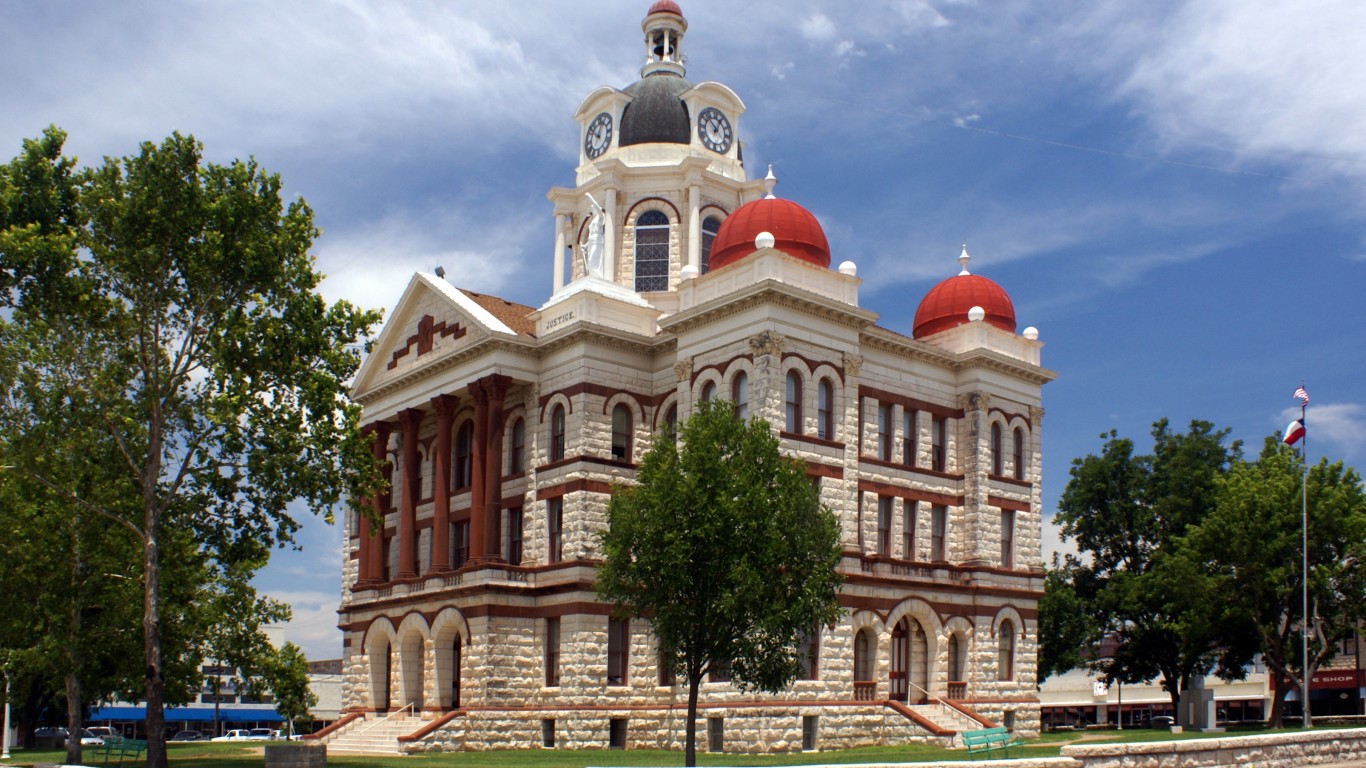
21. Coryell County, Texas
> Exceptional drought (D4), 8/15: 5.1% (54.2 square miles)
> Exceptional drought, one year ago: 100.0%
> Extreme drought (D3): 100% (1055.7 square miles)

20. Hall County, Nebraska
> Exceptional drought (D4), 8/15: 8.5% (47.0 square miles)
> Exceptional drought, one year ago: 0.0%
> Extreme drought (D3): 82.78% (457.5 square miles)
[in-text-ad-2]
19. Douglas County, Wisconsin
> Exceptional drought (D4), 8/15: 9.1% (120.1 square miles)
> Exceptional drought, one year ago: 0.0%
> Extreme drought (D3): 49.03% (649.7 square miles)

18. Bexar County, Texas
> Exceptional drought (D4), 8/15: 10.5% (132.2 square miles)
> Exceptional drought, one year ago: 100.0%
> Extreme drought (D3): 100% (1258.8 square miles)
[in-text-ad]
17. Montgomery County, Kansas
> Exceptional drought (D4), 8/15: 14.9% (96.8 square miles)
> Exceptional drought, one year ago: 0.0%
> Extreme drought (D3): 44.59% (288.8 square miles)

16. Bayfield County, Wisconsin
> Exceptional drought (D4), 8/15: 16.7% (251.8 square miles)
> Exceptional drought, one year ago: 0.0%
> Extreme drought (D3): 60.23% (907.0 square miles)
15. Kimble County, Texas
> Exceptional drought (D4), 8/15: 17.6% (220.8 square miles)
> Exceptional drought, one year ago: 64.9%
> Extreme drought (D3): 69.7% (874.8 square miles)
[in-text-ad-2]
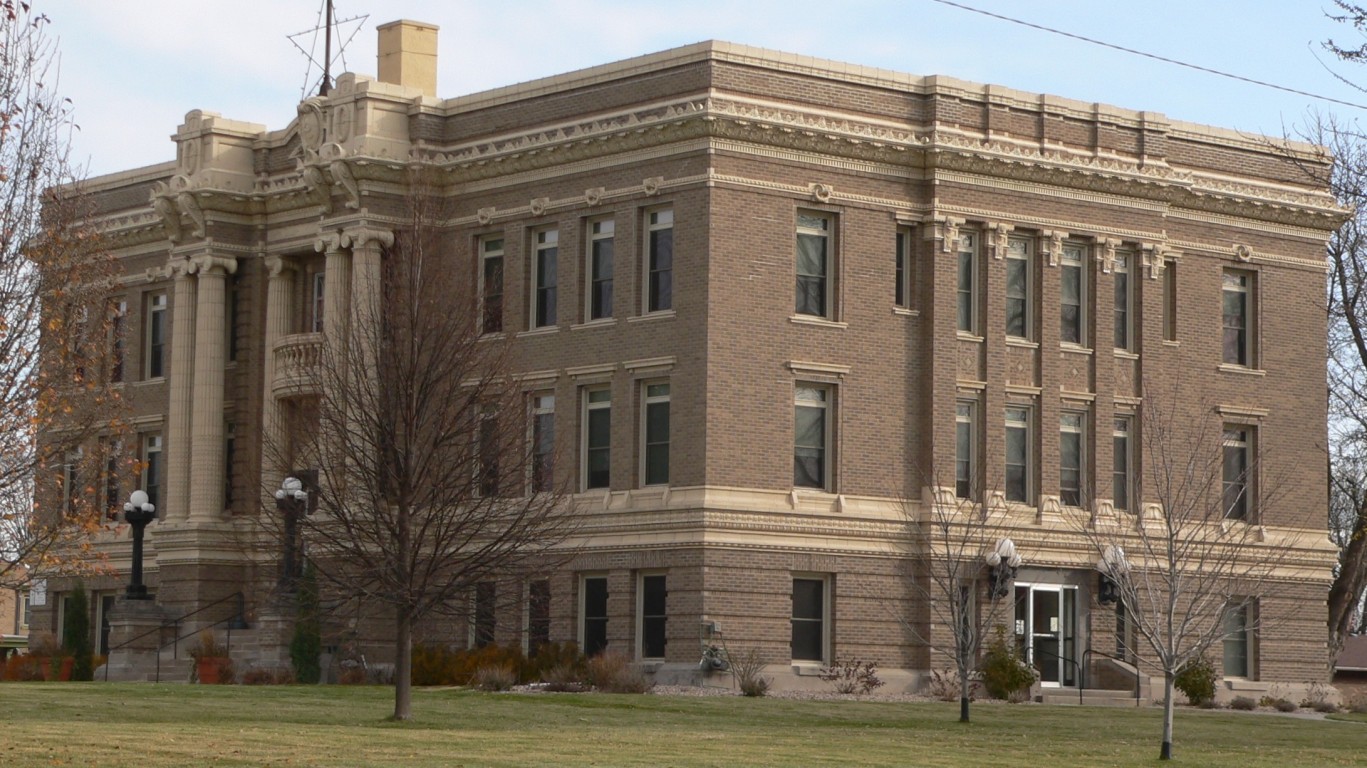
14. Clay County, Nebraska
> Exceptional drought (D4), 8/15: 22.6% (129.3 square miles)
> Exceptional drought, one year ago: 0.0%
> Extreme drought (D3): 99.83% (571.8 square miles)

13. Comal County, Texas
> Exceptional drought (D4), 8/15: 25.0% (144.9 square miles)
> Exceptional drought, one year ago: 100.0%
> Extreme drought (D3): 100% (578.6 square miles)
[in-text-ad]

12. Williamson County, Texas
> Exceptional drought (D4), 8/15: 25.4% (286.9 square miles)
> Exceptional drought, one year ago: 69.1%
> Extreme drought (D3): 100% (1130.8 square miles)
11. Blanco County, Texas
> Exceptional drought (D4), 8/15: 25.9% (183.0 square miles)
> Exceptional drought, one year ago: 100.0%
> Extreme drought (D3): 100% (706.6 square miles)
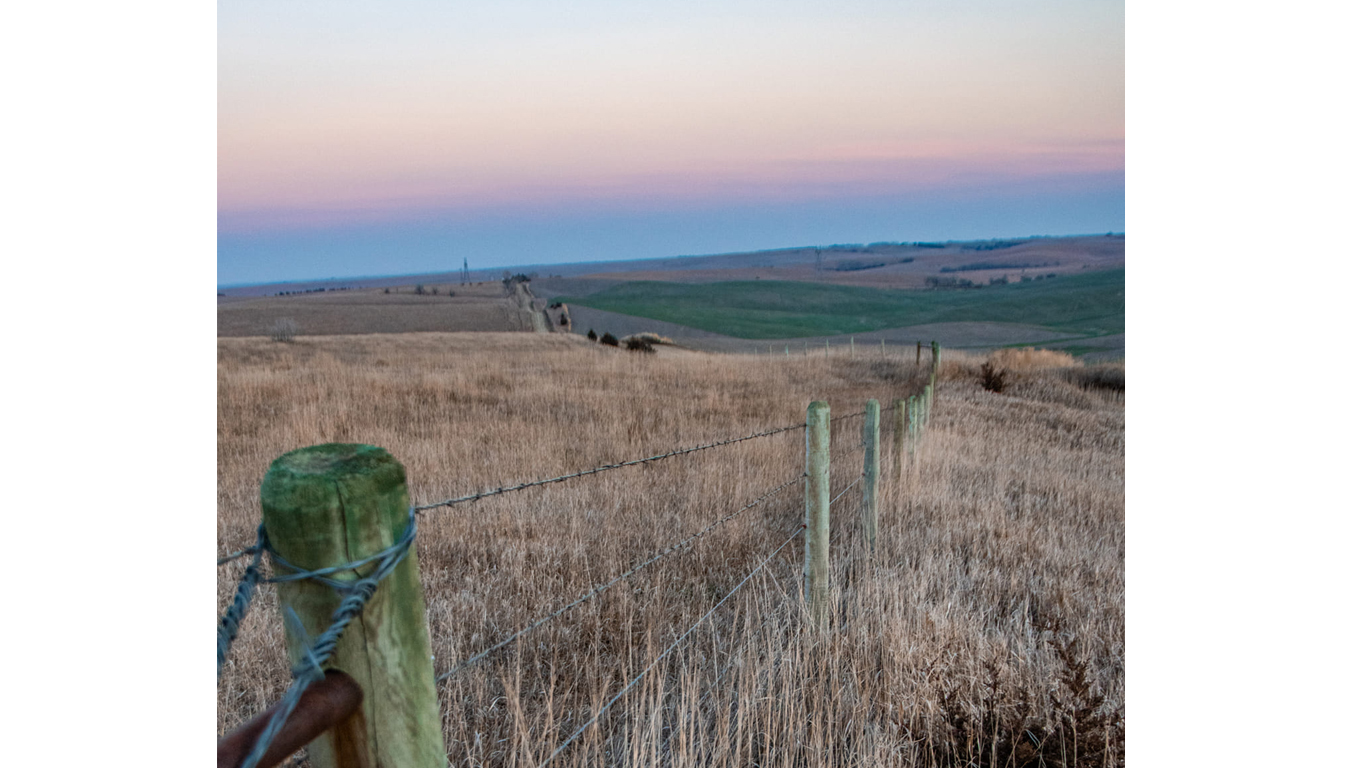
10. Nance County, Nebraska
> Exceptional drought (D4), 8/15: 32.1% (143.8 square miles)
> Exceptional drought, one year ago: 0.0%
> Extreme drought (D3): 98.81% (442.8 square miles)
[in-text-ad-2]

9. Merrick County, Nebraska
> Exceptional drought (D4), 8/15: 32.3% (159.6 square miles)
> Exceptional drought, one year ago: 0.0%
> Extreme drought (D3): 99.09% (489.8 square miles)
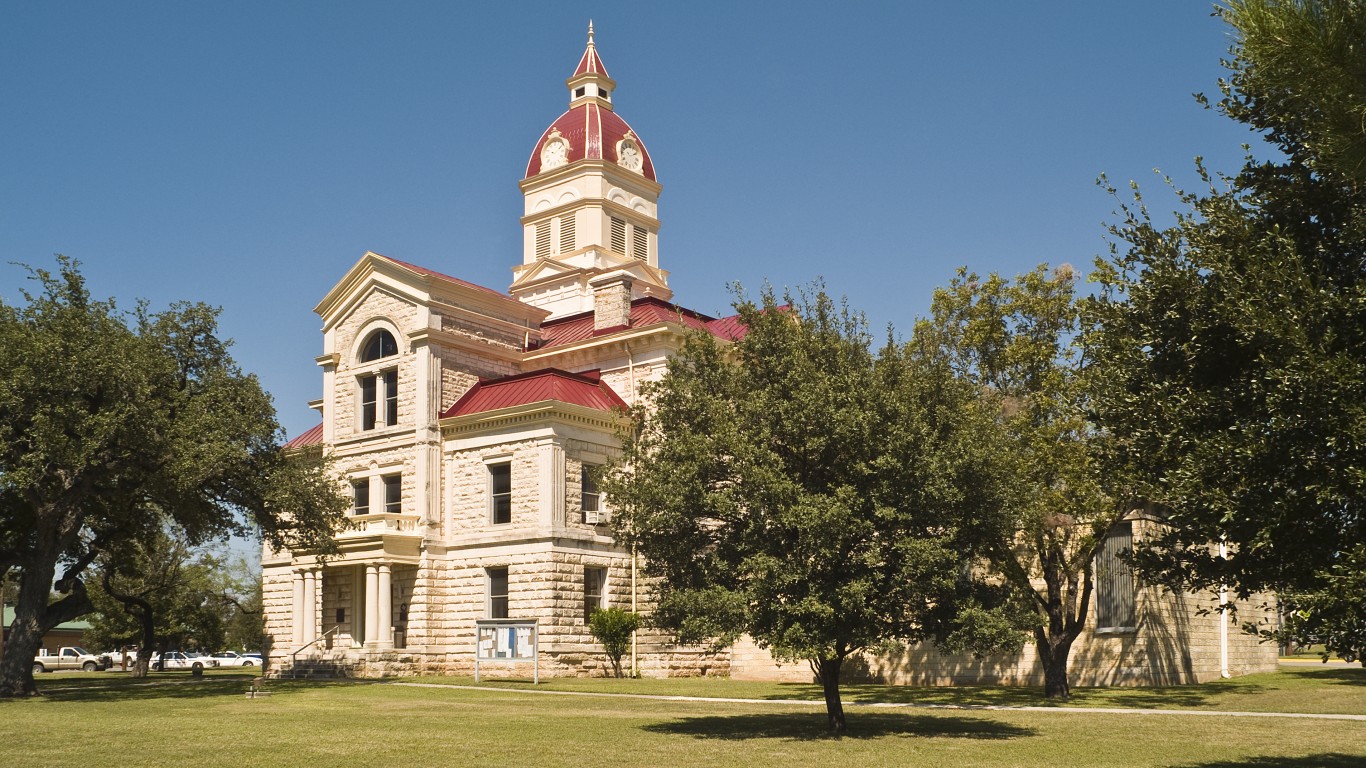
8. Bandera County, Texas
> Exceptional drought (D4), 8/15: 39.2% (314.0 square miles)
> Exceptional drought, one year ago: 100.0%
> Extreme drought (D3): 99.03% (793.1 square miles)
[in-text-ad]
7. Bell County, Texas
> Exceptional drought (D4), 8/15: 43.8% (476.5 square miles)
> Exceptional drought, one year ago: 86.0%
> Extreme drought (D3): 98.99% (1076.7 square miles)
6. Kerr County, Texas
> Exceptional drought (D4), 8/15: 65.1% (722.1 square miles)
> Exceptional drought, one year ago: 100.0%
> Extreme drought (D3): 100% (1109.2 square miles)

5. Gillespie County, Texas
> Exceptional drought (D4), 8/15: 67.8% (719.5 square miles)
> Exceptional drought, one year ago: 100.0%
> Extreme drought (D3): 100% (1061.9 square miles)
[in-text-ad-2]
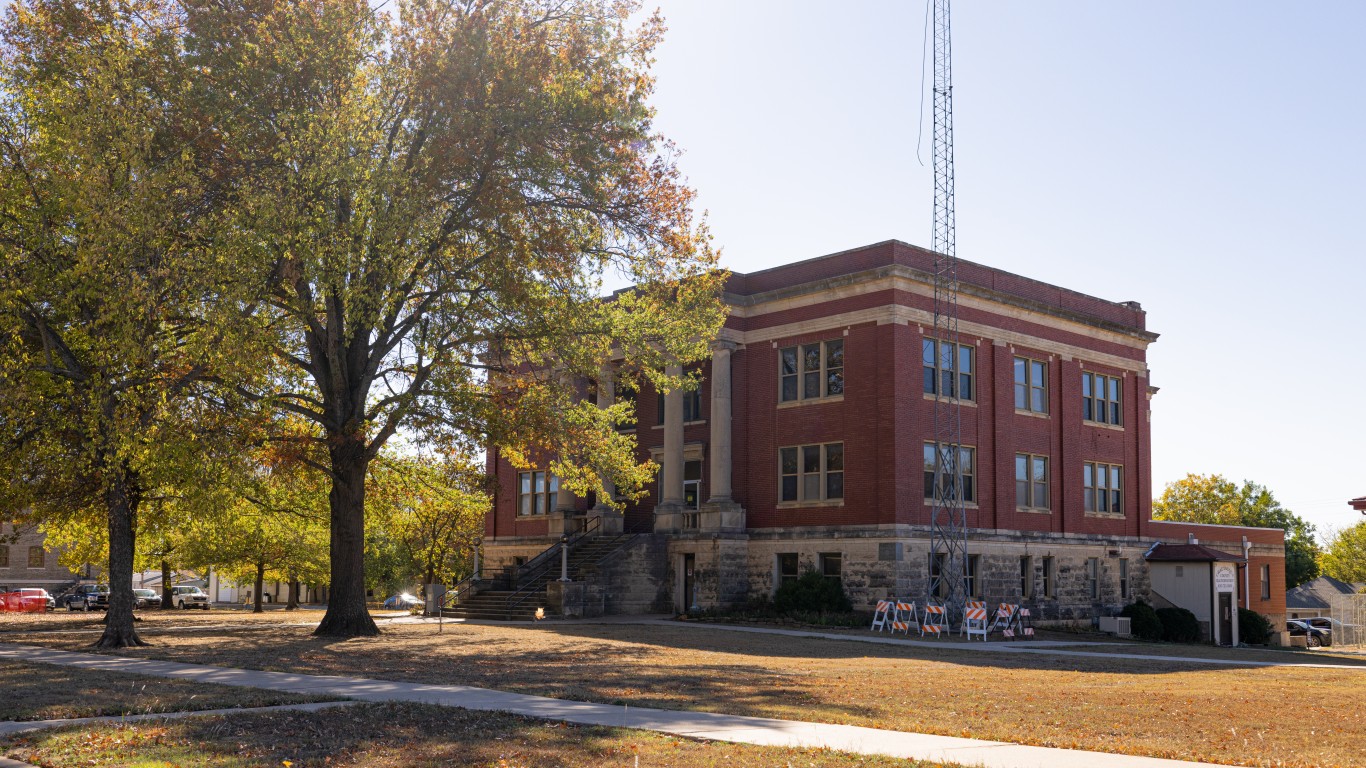
4. Chautauqua County, Kansas
> Exceptional drought (D4), 8/15: 72.1% (465.4 square miles)
> Exceptional drought, one year ago: 0.0%
> Extreme drought (D3): 100% (645.6 square miles)
3. Elk County, Kansas
> Exceptional drought (D4), 8/15: 73.9% (480.9 square miles)
> Exceptional drought, one year ago: 0.0%
> Extreme drought (D3): 99.89% (649.8 square miles)
[in-text-ad]
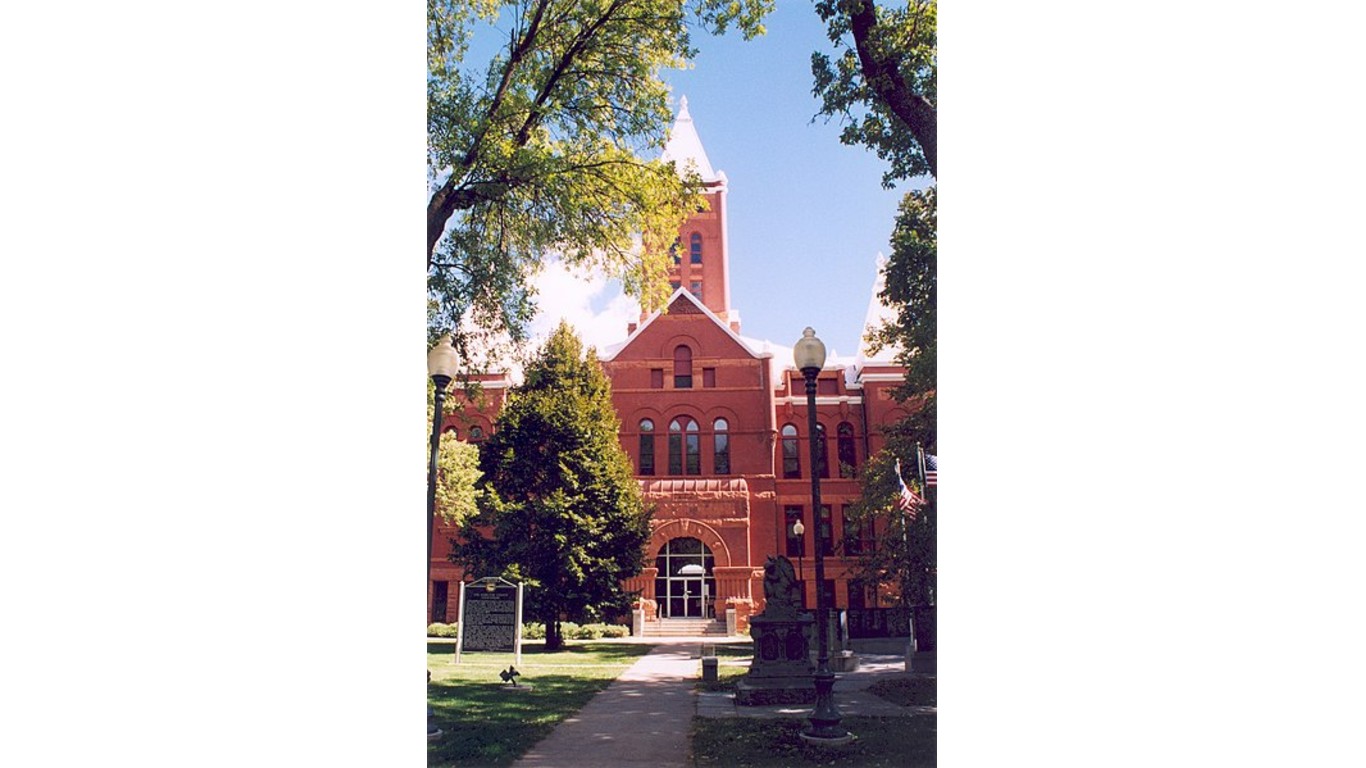
2. Hamilton County, Nebraska
> Exceptional drought (D4), 8/15: 90.5% (494.4 square miles)
> Exceptional drought, one year ago: 0.0%
> Extreme drought (D3): 100% (546.3 square miles)
1. Kendall County, Texas
> Exceptional drought (D4), 8/15: 100.0% (664.9 square miles)
> Exceptional drought, one year ago: 100.0%
> Extreme drought (D3): 100% (664.9 square miles)
Travel Cards Are Getting Too Good To Ignore (sponsored)
Credit card companies are pulling out all the stops, with the issuers are offering insane travel rewards and perks.
We’re talking huge sign-up bonuses, points on every purchase, and benefits like lounge access, travel credits, and free hotel nights. For travelers, these rewards can add up to thousands of dollars in flights, upgrades, and luxury experiences every year.
It’s like getting paid to travel — and it’s available to qualified borrowers who know where to look.
We’ve rounded up some of the best travel credit cards on the market. Click here to see the list. Don’t miss these offers — they won’t be this good forever.
Thank you for reading! Have some feedback for us?
Contact the 24/7 Wall St. editorial team.
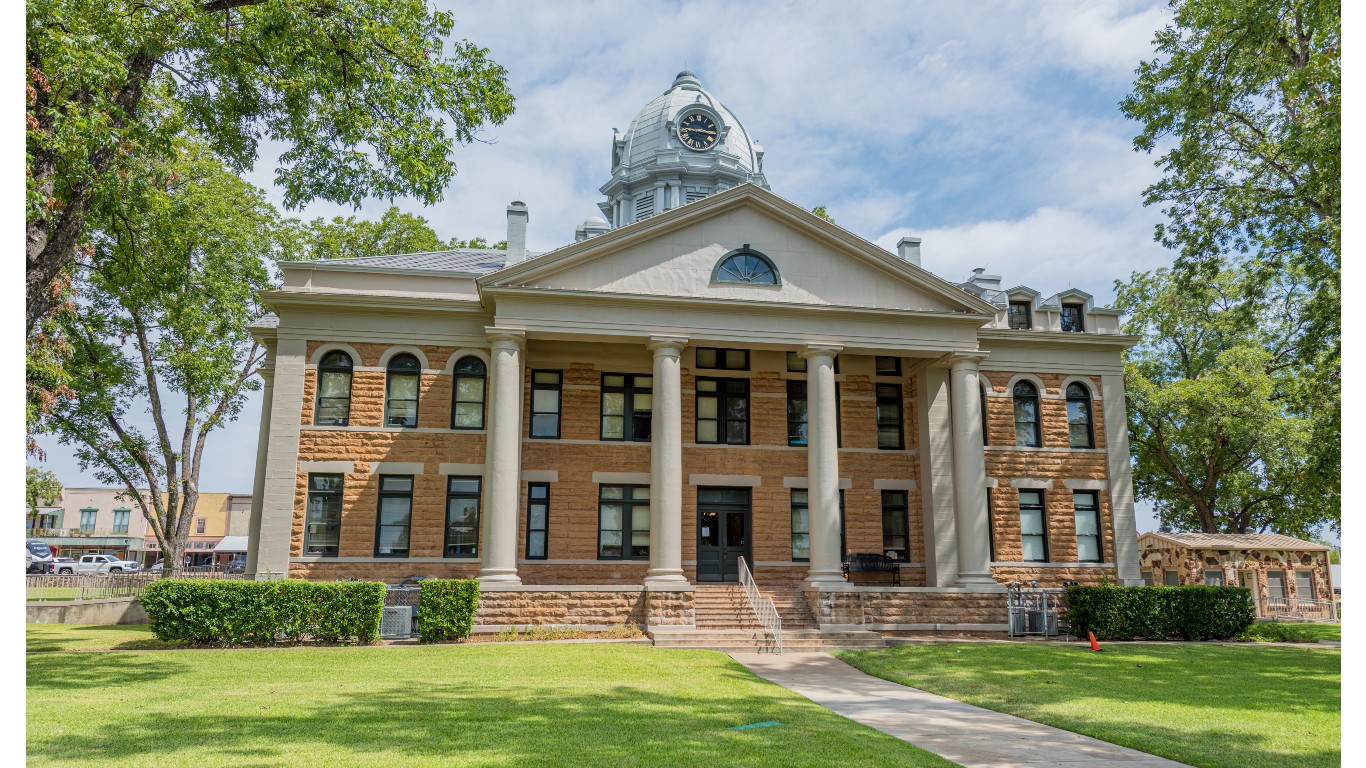
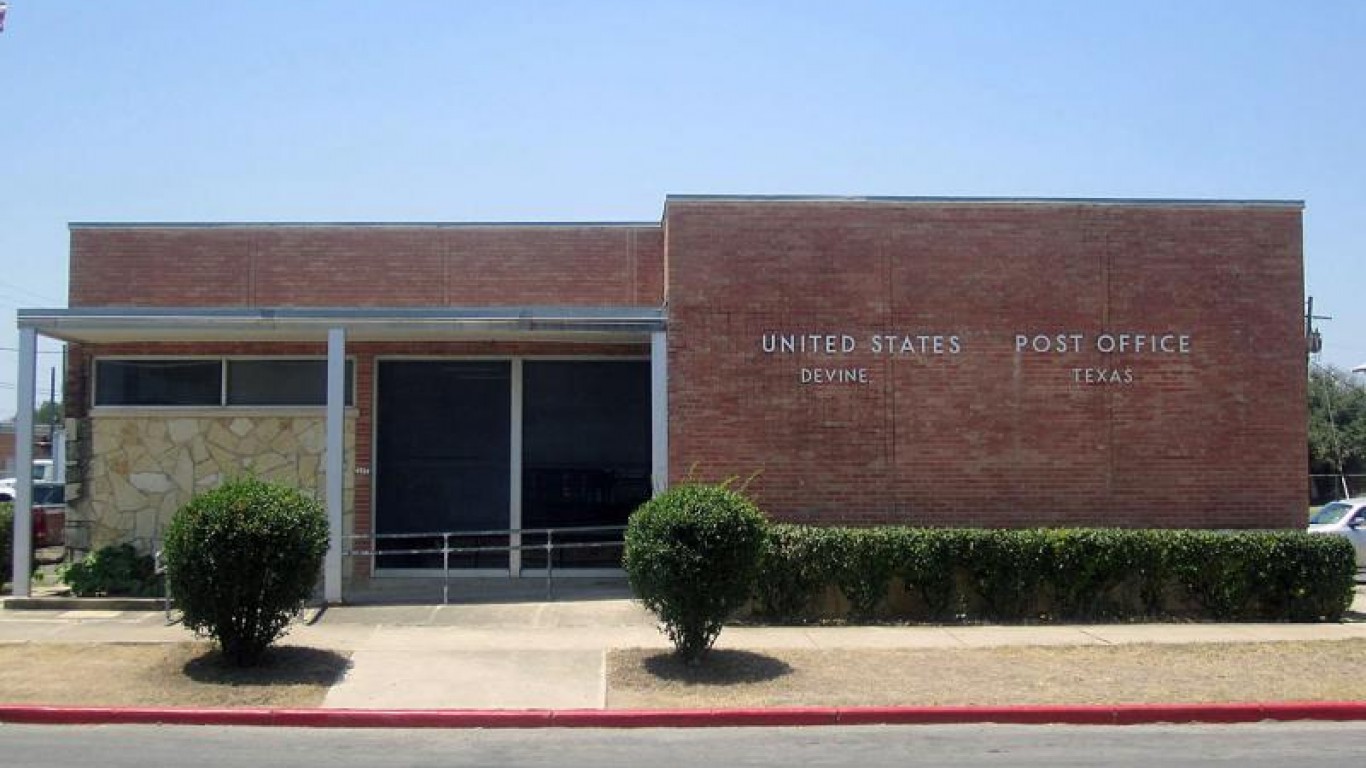
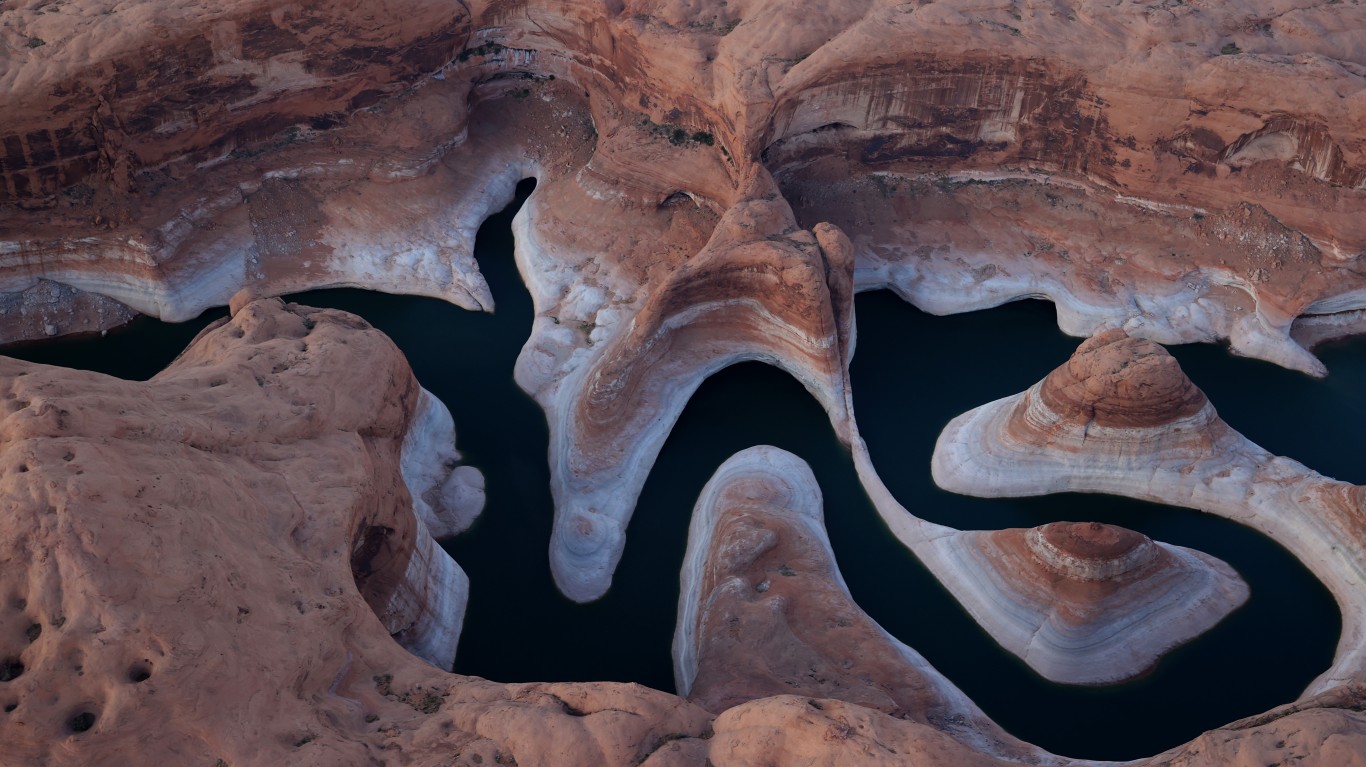 24/7 Wall St.
24/7 Wall St.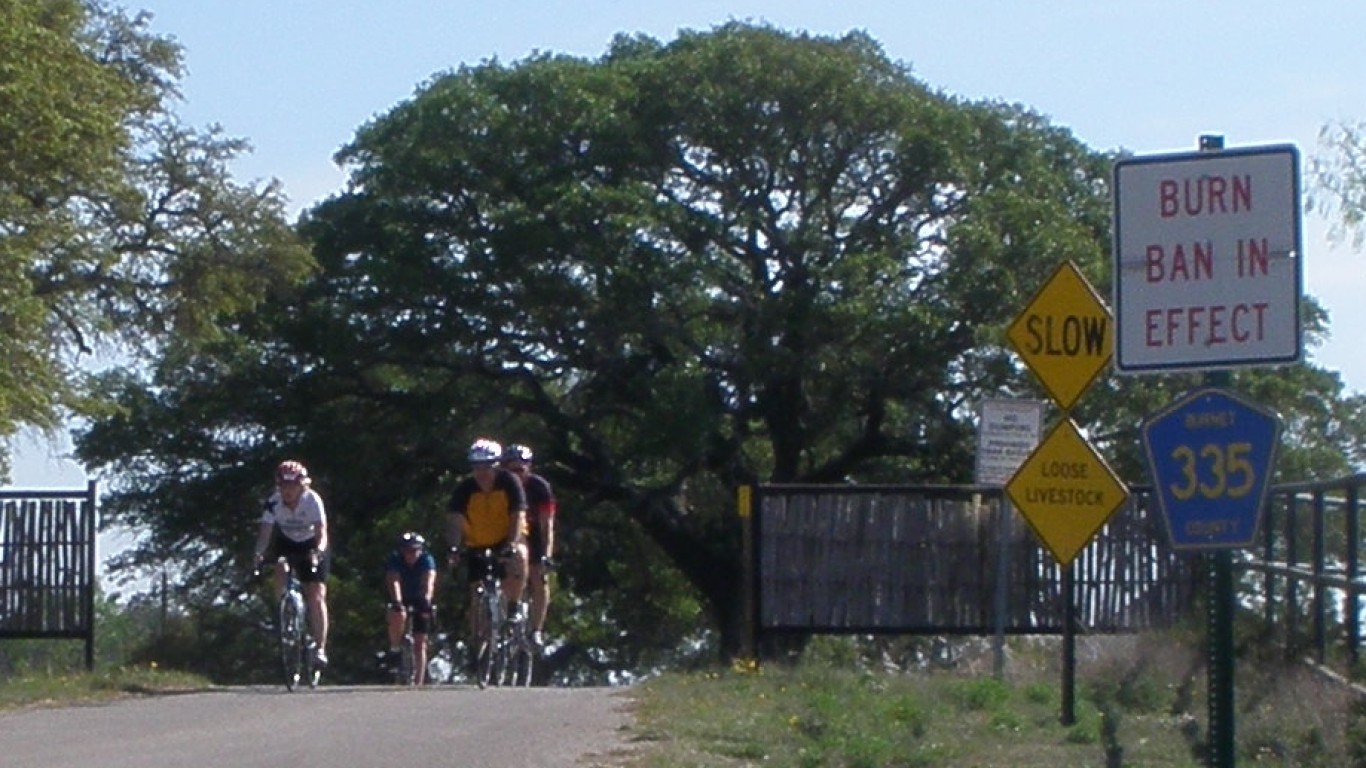
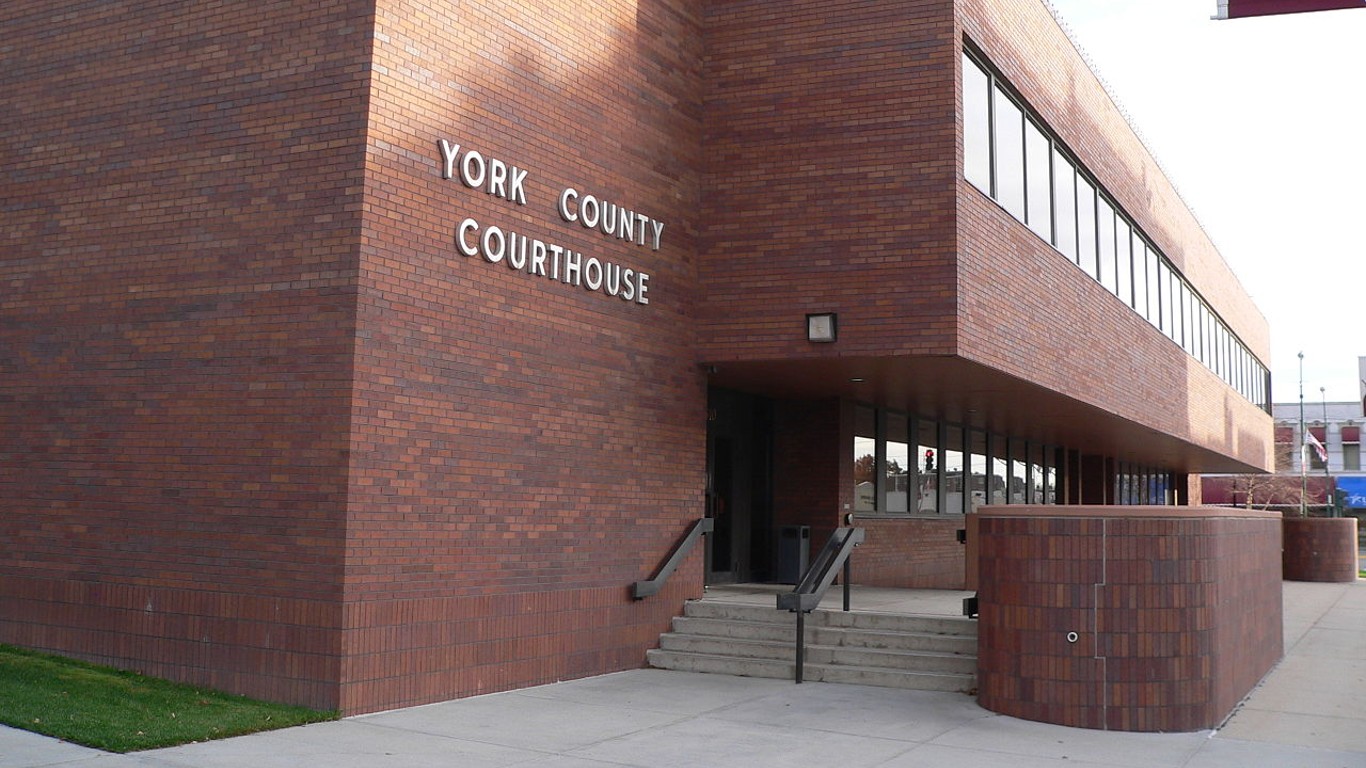



 24/7 Wall St.
24/7 Wall St.